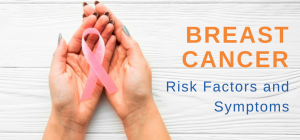 There are many success stories about mammograms. But there are conditions where many women are misdiagnosed and mistreated than those who avoid the development of terminal breast cancer.
There are many success stories about mammograms. But there are conditions where many women are misdiagnosed and mistreated than those who avoid the development of terminal breast cancer.
The misdiagnosed and mistreated women are wrongfully given chemotherapy treatments, which results in their rapid death.
Overall, it is stated that screening mammograms miss about 20% of breast cancers that are present at the time of screening. However, talking about the rest, mammograms were able to save many lives by finding breast cancer at an early stage. Also, many women could get rid of cancerous cells without a breast removal procedure.
Need of Mammogram
A mammogram can help you find breast cancer early, which will assist you in reducing your risk of dying from the disease by 25 percent to 30 percent or more.
What happens during Mammography?
During the mammogram, you and a trained technician will be the only ones in the examination room. The tech will position your breasts (one at a time) between two plastic imaging plates, which will apply pressure while taking the X-ray images. Multiple images will be taken from different angles.
Risks of Mammograms
Getting mammograms includes certain risk factors.
- Mammograms are not always accurate – The accuracy of the procedure depends partly on the technique used and the experience and skill of the radiologist. Other factors such as age and breast density may result in false positive or false negative mammograms.
- Screening mammography cannot detect all cancers – A mammogram may not be able to disclose some cancers detected by physical examination. Cancer may be too small or in an area where it is difficult to view through Mammography, such as your armpit.
- Having a mammogram may lead to additional testing – Among women of all ages, about 10 percent of mammograms require additional testing, including additional imaging tests such as ultrasound and a biopsy to remove the sample of breast tissue for laboratory testing. However, most abnormal findings that are detected on mammograms are not cancer.
- Not all of the tumors found by Mammography can be cured – Certain types of cancers are aggressive, grow rapidly, and spread early to other parts of your body. Hence, it becomes difficult to cure it even after detection.
The Advantages of Mammography
Apart from the risks, there are also many ways mammograms can help. They are:
- It can save a life: Finding breast cancer at an early stage can help you reduce the risk of dying through cancer by up to 25 to 30 percent. So it is always recommended that women crossing the age of 40 take a mammography test.
- Assures the best quality: If you are under fifty or have dense breasts, it is wise to get a digital mammogram. The test is recorded on a computer so that the physicians can enlarge it and look for disease more closely.
- Safe and fast process: Mammography is a speedy process. It takes only about 20 minutes and provides minimal discomfort to women. Plus, the process is safe as there is only a tiny bit of radiation involved.
Are mammograms really necessary?
Routine mammograms aren’t necessary for women of average cancer risk in their 40s, and women between 50 and 74 years old don’t need to undergo mammograms more often than every other year.
New studies have cast doubt on whether these unpleasant procedures save lives. As known, mammograms have a high risk of false-positive and false-negative findings.
A large, long-term study in a major medical journal, BMJ, states that Mammography may be a waste of time and money. The actual study says screening for cancer with Mammography in women ages 40 to 59 years does not reduce mortality from breast cancer in places where treatments are available.
Alternatives to Mammograms
Apart from common technologies such as DBT, MRI, and ultrasound to detect breast cancer, some other screening options are very safe and effective.
- Thermography – Thermal imaging uses a camera to measure the temperature of the patient’s skin to determine if cancer cells are cells are growing or multiplying in the breast.
- Molecular Breast Imaging – MBI represents a class of novel nuclear medicine imaging modalities that provide high-resolution functional imaging of breast tissue.
- Low-dose Mammography – Low-dose mammography employs a single-emulsion film and a high-definition intensifying screen to reduce radiation dosage and enhance the contrast of soft tissue structures in the breast.
- Contrast-enhanced digital Mammography – CEDM uses Mammography and a standard iodinated IV contrast agent to make cancers that are not visible on standard mammograms show up as enhancing areas.
Conclusion
The main risk of mammograms is that they are not perfect. Normal breast tissue can hide breast cancer so that it does not appear on the mammogram. This is called a false negative. But there are many times when they are correct and has helped save many lives. So it is best to consult with your doctor if you should or should not go for Mammography.







